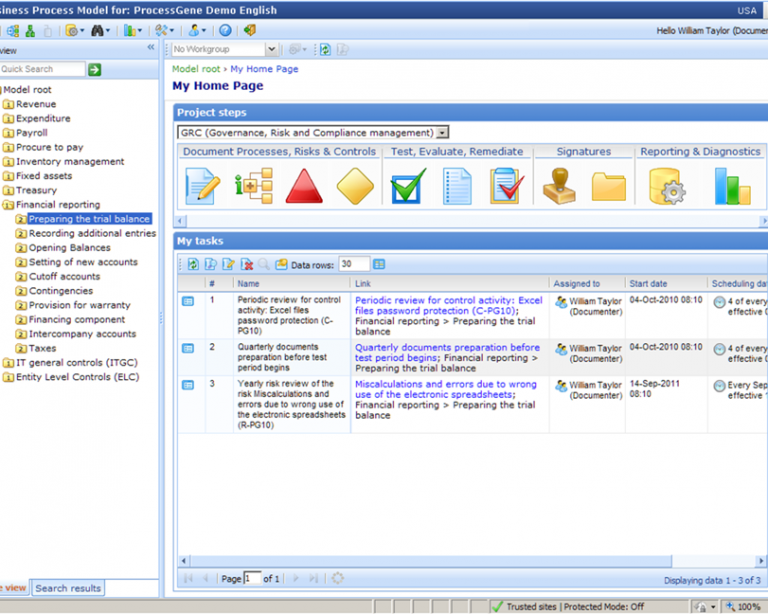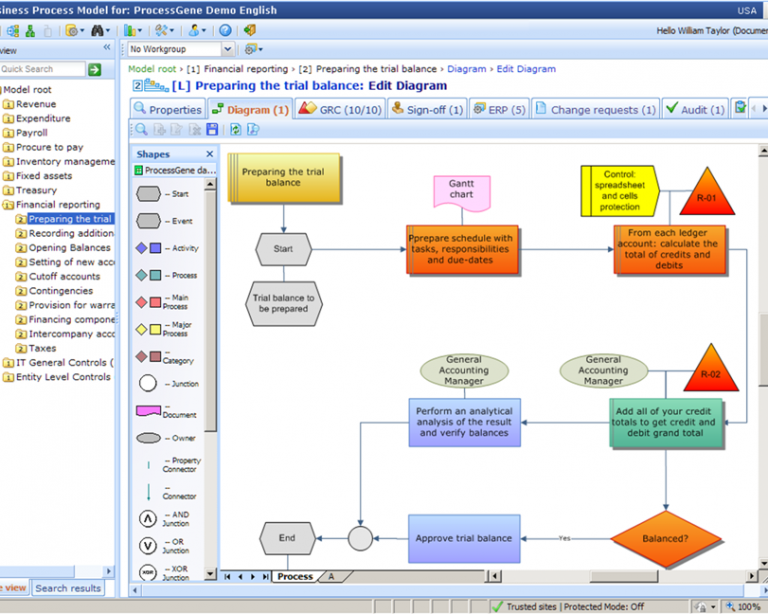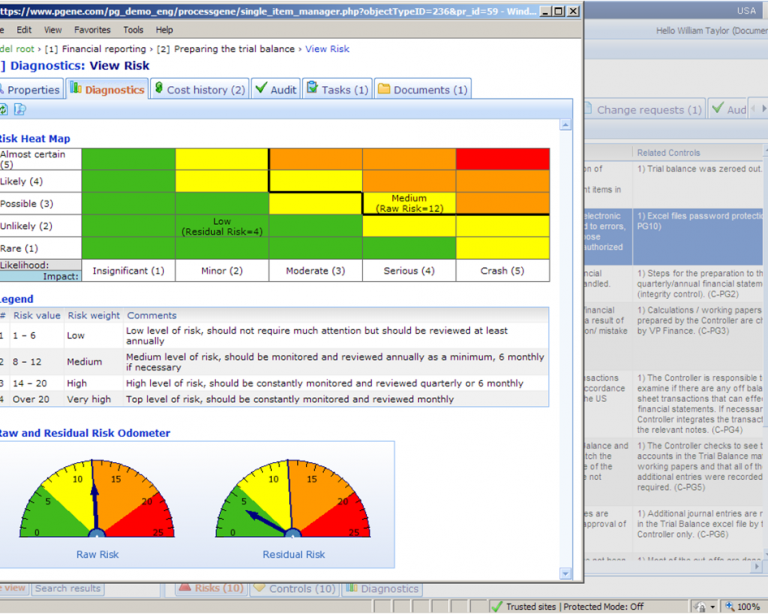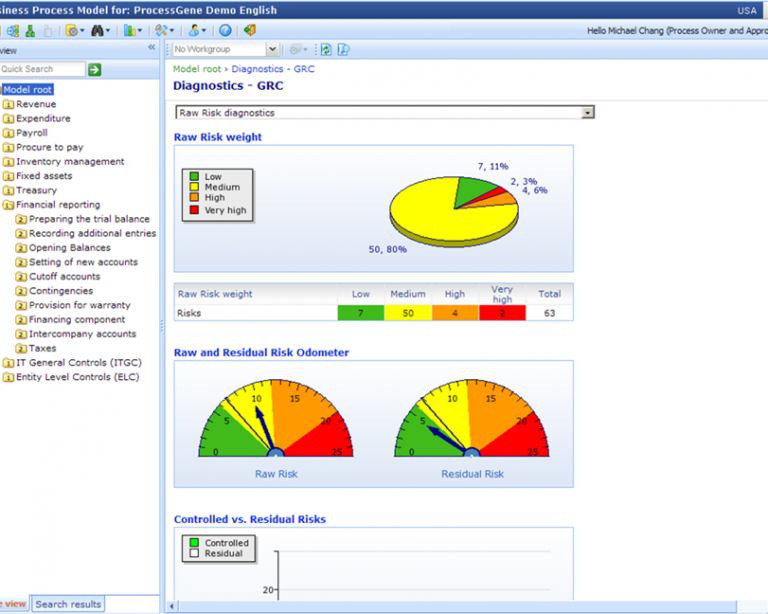| Solution & Benefits | Lifecycle | Related Regulations | ||||
ProcessGene™ Solvency II Software – IntroductionThe ProcessGene™ GRC software suite provides a complete solution for Solvency II compliance. The Solvency II software is implemented within days, immediately creating compliance visibility and centralized control. The Solvency II software establishes an automated workflow that reduces the time and cost of compliance enforcement and eliminates manual labor, maintenance of multiple excel spreadsheets, etc. ProcessGene™’s Solvency II software is designed for multi-subsidiary organizations, based on our Multi-Org technology. ProcessGene is acknowledged worldwide as a leading provider of Business Process Management (BPM) software solutions (see Gartner’s report on ProcessGene). Solvency II Compliance in a Changing Business EnvironmentIn today’s highly regulated environment, enterprises are increasingly strained by regulatory compliance concerns, while at the same time having to promote the ongoing conduct of business. Executive officers are specifically required to demonstrate capabilities for effective regulatory compliance, and to ensure corporate transparency and visibility into the business. ProcessGene™ GRC software provides a complete solution for Solvency II compliance. The Solvency II software is implemented within days, and uses automation to reduce the time and cost of compliance enforcement. Compliance ChallengeThe Solvency II regulation was introduced 2009 by the the European Parliament and the Council of the European Union, and has been continually maintained and updated to reflect the dynamic changes in business environment. The Solvency II regulation is aimed at regulating the amount of capital that EU insurance companies must hold to reduce the risk of insolvency. Solvency II applies to insurance companies operating in the European Union. The proposed Solvency II framework has three main sections (pillars):
Pillar 2’s Own Risk and Solvency Assessment (ORSA) is the main engine for implementing Solvency II principles, requiring insurance companies to identify, assess, mitigate, control and monitor their risks on an ongoing basis. Ensuring compliance with the Solvency II regulation is an important organizational task, which requires ongoing management of compliance data. The compliance process is continuous and needs to be repeated periodically and closely monitored. Managing officers are personally responsible to maintain the Solvency II compliance, and this responsibility requires significant management attention and allocation of time and effort. Beyond self assessments or assessments of compensated third parties (such as accounting auditors or regulation consultants), the organization may also confront other external audits that show little if any tolerance to deficiencies. The ProcessGene credo in this matter is that objective compliance data, maintained by the organization itself, has much higher value than opinions of compensated third parties. We also believe that only an ongoing, continuous process can ensure actual compliance and audit clearance. Compliance Challenge for Multi-Subsidiary OrganizationsMulti-subsidiary organizations are confronting even more complex compliance challenges, due to differences between the business processes and operational characteristics of subsidiaries. Hence, the management and communication of Solvency II compliance in a multi-subsidiary environment becomes an extremely complex task when managed manually or by tools that are not specifically designed for Multi-Org operations. Solvency II Compliance with the ProcessGene™ GRC Software Suite: Solution & BenefitsProcessGene™ GRC software provides a complete solution for Solvency II compliance. Our Multi-Org software solution automates the Solvency II compliance lifecycle and offers the following benefits:
ProcessGene™ “Multi-Org” TechnologyProcessGene™ has been a pioneer and global leader in Multi-Org technology. During the past decade we have mastered a unique expertise in providing software solutions to multi-subsidiary organizations worldwide (see Gartner’s report on ProcessGene). Our Solvency II compliance software has been specifically designed for multi-subsidiary organizations and it features the most comprehensive solution for complex, distributed compliance challenges. Read more about ProcessGene Multi-Org technology. Screenshots
|
||||||
